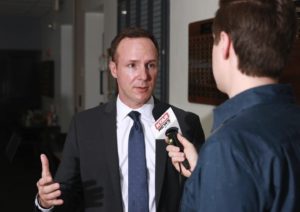‘Ghost students’ cost Wisconsin taxpayers nearly $360 million
(The Center Square) – Enrollment in Wisconsin’s public schools is down, yet many school districts in the state continue to be paid for students who are no longer in their classrooms.
The…

(The Center Square) – Enrollment in Wisconsin’s public schools is down, yet many school districts in the state continue to be paid for students who are no longer in their classrooms.
The Wisconsin Institute for Law and Liberty on Thursday released a report on so-called “ghost students.”
The report uses numbers from the Department of Public Instruction to get a sense of just how many students are in the system, but not in school every day. WILL said 18 other school districts had similar ghost student numbers. In all, the report says the state overpaid a total of $360 million extra dollars for ghost students.
“The COVID-19 pandemic brought about a rapid and dramatic decline in enrollment of more than 20,000 students in a single year. This trend did not reverse in 2021, with public school enrollment declining by a further 800. While some districts have experienced larger declines than others, this trend is pretty typical around the state. Of Wisconsin’s 421 school districts, 336 (nearly 80%) have seen a net enrollment decline over the most recent four years,” the report’s authors wrote.
WILL says there are 20,703 ghost students who are no longer enrolled, but continue to be counted in enrollment figures.
The report points to Wisconsin’s three-year rolling average, which gives public schools a three-year runway to adjust to changing enrollment, and Wisconsin’s hold harmless guarantee as the biggest problems.
“Each year, school district spending limits are calculated via the state funding formula as mandated by state law. A key component of this formula is the number of students in the district. This number is used to calculate both the total revenue that will be made available to the district, along with the manner in which that revenue is split between state aid and local property taxes,” the report states. “However, rather than using the current enrollment in the district to make these calculations, the three-year rolling average is utilized.”
WILL’s report details the number of ghost students in Wisconsin’s largest school districts.
For example, the report says Milwaukee Public Schools’ enrollment for the last school year was 68,636 students, but the district was paid for 74,218 students. It was the same in Madison Metropolitan Schools where the 2021-2022 enrollment was 26,188, but the district was paid for 26,904.
The report does offer some solutions.
“Some may argue that this inefficiency is not especially problematic. After all, public schools cannot immediately adjust their spending practices when students leave. However, the successful introduction of market forces into education requires that we build a far more nimble and responsive public school system,” the report states. “One option would be to base funding simply on the most recent enrollment count from the previous year. But more frequent counts could be possible as well.”



